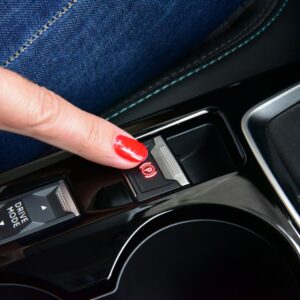Sometimes, the only parking spot available is the most difficult one to park in. This can be particularly frustrating if it’s a parallel slot between two other vehicles. So, how can you navigate your vehicle into the spot and get on with your daily chores?
The Ultimate Parking Challenge
Parallel parking is arguably one of the trickiest skills to master as a driver. For some, it might take a great amount of patience to successfully park their vehicle. But what exactly makes it hard to do?
It can be difficult to measure your vehicle’s distance while you’re inside. Also, parallel parking spaces are often in areas with a lot of pedestrians.
According to a survey by The Zebra, about 49% out of 1,000 Americans have “parallelophobia” or the fear of parallel parking.
Respondents who claim to have trouble parallel parking explained that they’re afraid of causing traffic, hitting another car, getting blocked, and hitting the curb, which is why they don’t like parallel parking.
How To Parallel Park
To park in a parallel space, there are a few key steps to follow:
Find a Good Space
Before going through all the pains of parking in a parallel parking space, you need to make sure your vehicle fits. Ideally, the space will be one and a half times the length of your vehicle. This gives you all the space you need to perform the tricky maneuvers necessary to get into place. You can in theory fit into smaller spaces. In fact, you should be able to maneuver into a space as long as it’s at least three feet longer than your vehicle. But, we don’t recommend attempting it if you aren’t a seasoned driver.
Position Your Vehicle
Position your vehicle parallel to the car in front of the empty spot. If there’s no vehicle there, do your best to judge where one would be. Stay two to three feet away from the side of the parked vehicle as you pull up next to it.

Check Your Surroundings
Parallel parking is already difficult as-is, and you don’t want to cause any accidents as you park. Check your mirrors and your surroundings to make sure there isn’t any incoming traffic or other hazards in your blind spot.
Reverse Your Vehicle
Next, it’s time to shift your vehicle into reverse. Begin backing up slowly, turning your wheels fully to the right as you do. Stop once you see the full front view of the car behind you in your left mirror.
Straighten Your Steering Wheel
Reverse in a straight line to close the distance between yourself and the curb. Do this by turning your wheels straight and reversing until the taillight of the vehicle in front takes up the view of your right side mirror.
Turn Your Steering Wheel to the Left
Eventually, you’ll find that the front of your vehicle is past the back bumper of the vehicle you aligned yourself with earlier. At this point, begin turning your steering wheel to the left and continue inching backwards.
Straighten Your Wheels and Adjust
Once you’re in the slot, you can straighten your wheels and adjust accordingly. Distance in parallel parking is very important. Make sure to leave space both in front of and behind your vehicle so the other drivers can easily enter and leave the other parallel parking spaces. In addition, keep your vehicle 6 to 12 inches away from the curb. In case of rain, this allows the water to drain properly while also making it easier for you to exit the spot when it’s time to drive off.
Place Your Vehicle in Park
Finally, once you’re settled in your spot, set your vehicle to park mode. For manual transmission vehicles, set your vehicle to first gear to make use of engine brake. When parking on a hill, don’t forget to turn your wheels away from oncoming traffic. If your manual transmission vehicle is facing downhill, set your gear to reverse instead of first.
How to Practice Parallel Parking
If you want to practice your parallel parking in a more controlled environment, you can use traffic cones. Find a relatively quiet street with few pedestrians and set up a pair of cones 15 feet apart. Practicing with cones lets you avoid causing damage to other vehicles while you’re still getting used to the maneuver.
Parallel Parking Strategies to Try
Although parallel parking is a universal concept, you’ll notice that there’s really not one way to do the maneuver. This is because vehicles differ in shape and size, which means some might require additional steps when parallel parking.
While this might be the case, it doesn’t mean there aren’t general guidelines you can follow to park properly in a parallel space.
Observe the 1-2-1 Method
The 1-2-1 maneuver refers to the number of times you need to turn the steering wheel.
Assuming that you’re parking on the left-hand side of the road, turn the steering wheel once to the left, twice to the right, and one last turn to the left.
Know Your Reference Points
Again, reference points can vary, depending on the type of vehicle you’re driving, so you must know your car well enough in terms of its length and width.
Driving instructors will usually give out some reference points you can refer to when parking, as well as some tips on how to gauge your distance from other vehicles and curbs.
Parallel Parking in a Driving Test
There are some things to keep in mind when parallel parking specifically for your driving test. The dimensions of a parallel parking test space are around 7 to 9 feet wide and 20 to 25 feet long depending on the testing center and your State. An average car is around 15 feet long, meaning you’re given more than ample space to perform in a controlled environment.
Be sure to take your time when parking during a test. You’re given enough time and making a mistake might cost you the whole test. In addition, when shifting gears to reverse into a space, make sure your vehicle is at a full stop before shifting.
Once you master these parallel parking steps, you’ll be ready to park in those pesky spots. Here’s hoping whoever parks next to you also knows what they’re doing.
Any information provided on this Website is for informational purposes only and is not intended to replace consultation with a professional mechanic. The accuracy and timeliness of the information may change from the time of publication.


























